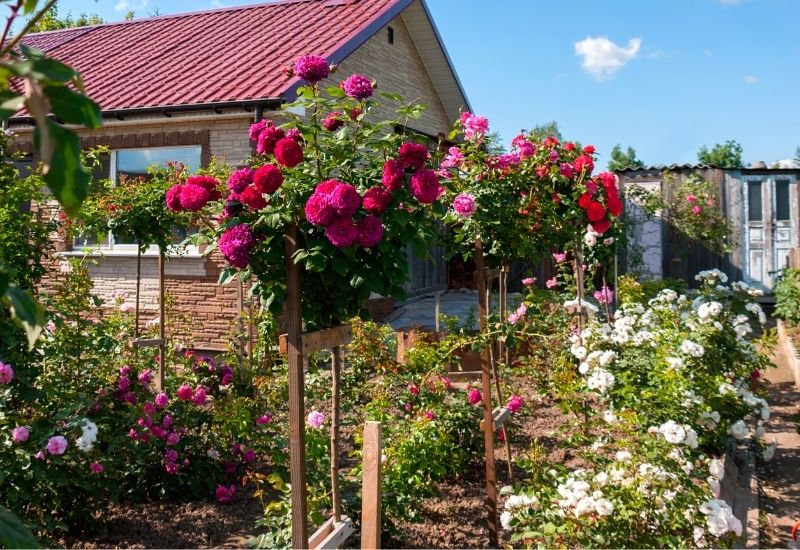
“There is no rose without thorns,” goes the saying – and it’s wrong. You can grow beautiful shrubs and climbers of the most famous flower in the world and have all the advantages, blooms, beautiful foliage, colors and fragrance, but without the painful spikes!
This is a great plus for a child (and animal!) friendly garden… All you need is a thornless or “smooth touch” rose variety that you love!
There are no thornless roses in Nature; they have been bred for about 150 years. But even cultivars still tend to maintain their thorns and you may find them on the old woody stems or fresh ones with blooms will be smooth.
No need to look further for the best rose variety without thorns that of the last century and a half. We have made the “smoothest” shortlist out of all of them and they are waiting for you right now, with a few tips for a garden of blooms and no stings as well!
Why Should You Grow a Thornless Rose?

Have you ever wondered why you should prefer a smooth rose to a thorny one? Let me try to convince you…
If you choose a thornless variety to grow as your garden rose, you will have a few advantages:
And then there’s an advantage you may not expect:
So, we are lucky to have roses with no “stingy bits”, but how did we get to have them?
Where Do Thornless Roses Come from?
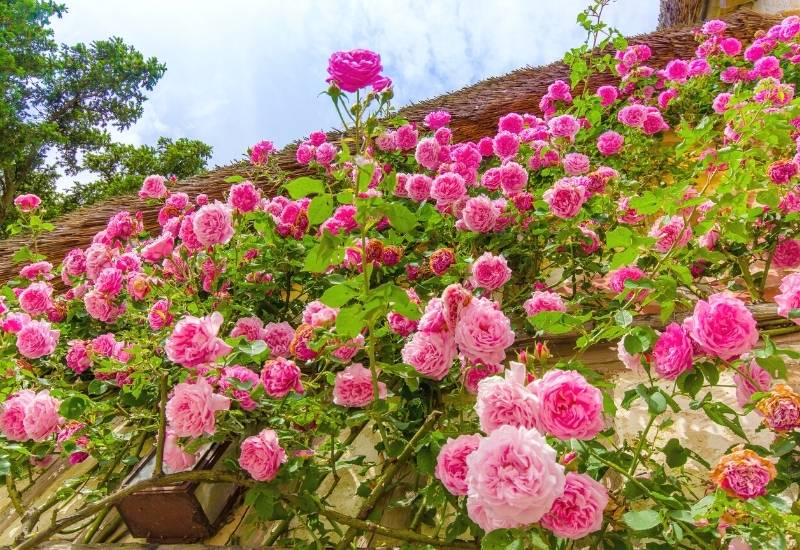
Thorns are part and parcel of they symbolism of roses. And in ancient times, roses were famous and very much appreciated, but if you wanted to pick one, you risked getting stung.
These flowers also represent love because they are beautiful but they hurt. So, when did the first thornless roses appear?
We are not sure, but apparently the oldest known thornless variety is the heirloom Bourbon rose ‘Zephirine Drouhin’, bred in France by Bizot in 1868.
It is not fully thornless, but the stems are almost entirely smooth and you will only find a few spikes, especially lower down.
Most thornless varieties came about from 1962, thanks to a pioneer called Harvey Davidson (nothing to do with motorbikes!) from a nursery called Western Roses in California. Since then, the term “smooth touch” has become popular, and many of the more recent cultivars derive from his.
So, no rose in the wild is thornless, and all the smooth varieties are hybrids and cultivars. But have you ever wondered, “Why is a thornless rose without thorns?”
I mean, what makes them stop growing thorns? I want to let you in on a secret next, so you can wow your friends… The real trick to make a rose smooth and without stingy spikes!
What Is a Thornless Rose?
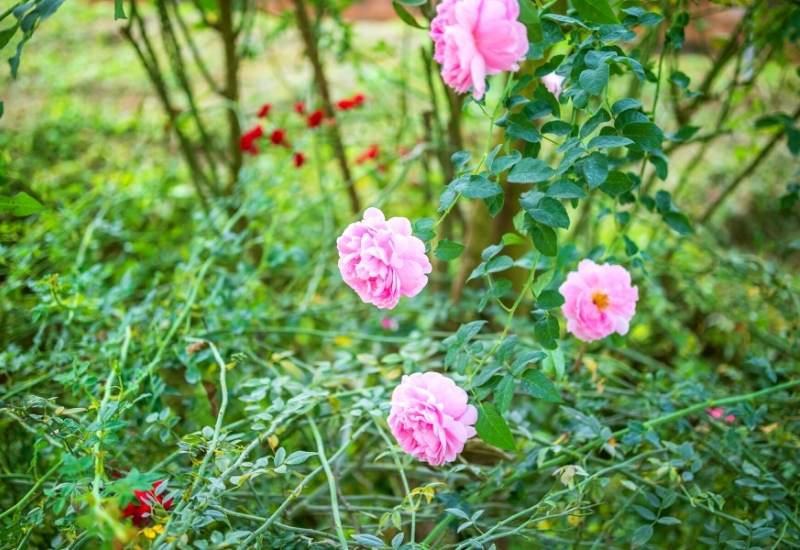
A thornless rose exploits a strange genetic phenomenon called a “chimera”. Put simply, the tissue under the “skin” of the stem wants to produce the spikes, but the outer layer, the epidermis stops it. If it does it every now and then, it just controls the number of thorns that grow on a stem.
But by selecting varieties with an ever more “thorn blocking” epidermis, breeders have managed to obtain almost totally smooth varieties.
Which Types of Roses Are Thornless?
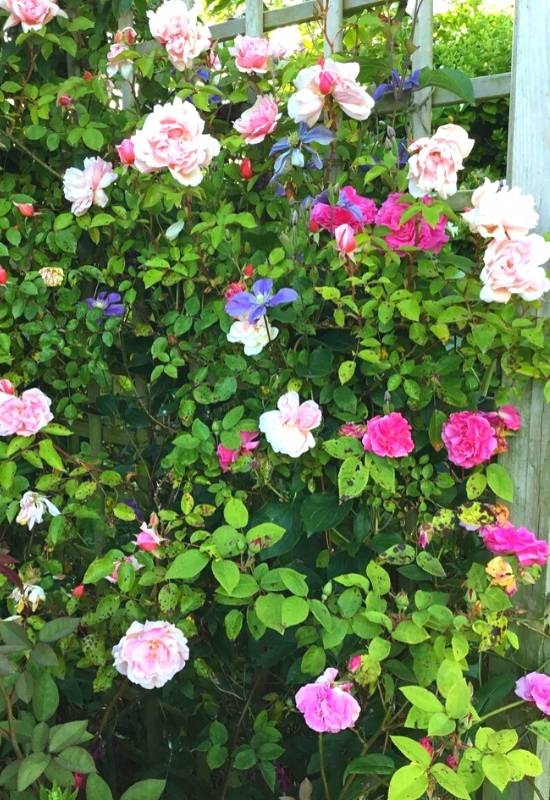
In theory we can have thornless roses of all groups, but there are some where the choice is much bigger, and these are:
Having said this, you can find single and double roses, fragrant flowers, small and big shrubs… And we are just about to see the very best!
12 Beautiful but Thornless Rose Varieties
Some of these rose varieties are old and heirloom, others are new and modern looking, but they are all completely thornless, beautiful – I am sure you will agree!
1: Rose ‘Zephirine Drouhin’ (Rosa ‘Zephirine Drouhin’)
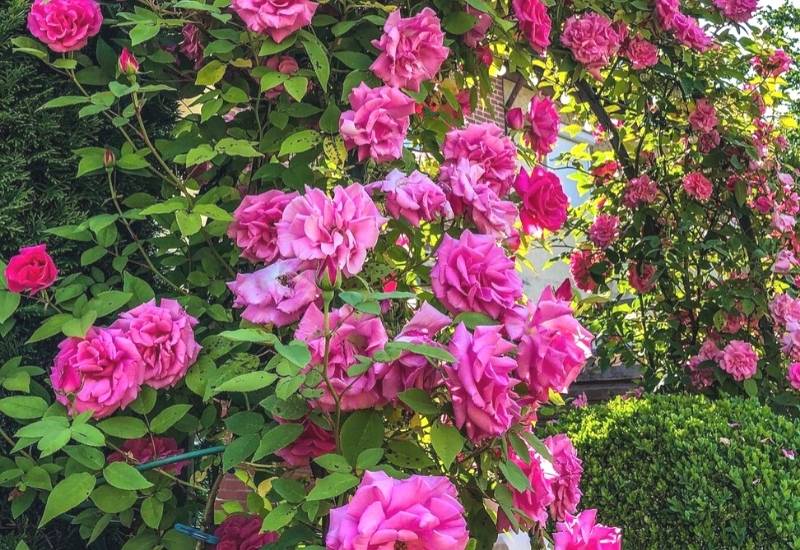
For a classic thornless variety, the heirloom Bourbon rose ‘Zephirine Droughin’ is a piece of history as well as a generous beauty. The fully double pink blooms come on almost perfectly smooth purple stems and they start in June…
But they will keep blossoming till the first frost! It is a lovely climber that looks great against walls or over pergolas and gazebos.
And on top of this, it is even suitable for poor soil! Basically you get all the advantages (or most) of a rose and few of the disadvantages.
Bizot’s historical ‘Zephirine Drouhin’ is ideal for informal gardens; it shouts out “traditional” and “countryside” with its beauty, and it can turn a wall into a picture perfect English country garden corner!
2: Rose ‘Smooth Angel’ (Rosa ‘Smooth Angel’)
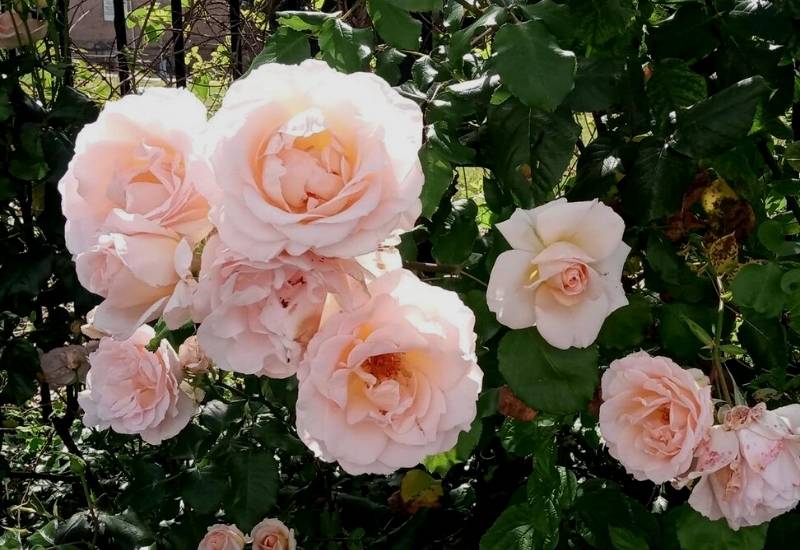
A thornless hybrid tea rose with striking colors for your garden is the heirloom ‘Smooth Angel’, one of the original Harley Davidson cultivars.
This delicate looking beauty has a mix of perfectly blended colors that range from cream pink to light apricot.
The flower heads are tea cup shaped, fully double and very enchanting and highly fragrant. It is almost completely smooth, with just a w thorns appearing occasionally.
This 1968 variety is ideal to create a dreamy ambience in gardens but it is also small enough for container gardening, so you can have it on your terrace too!
3: Rose ‘Veilchenblau’ (Rosa ‘Veilchenblau’)
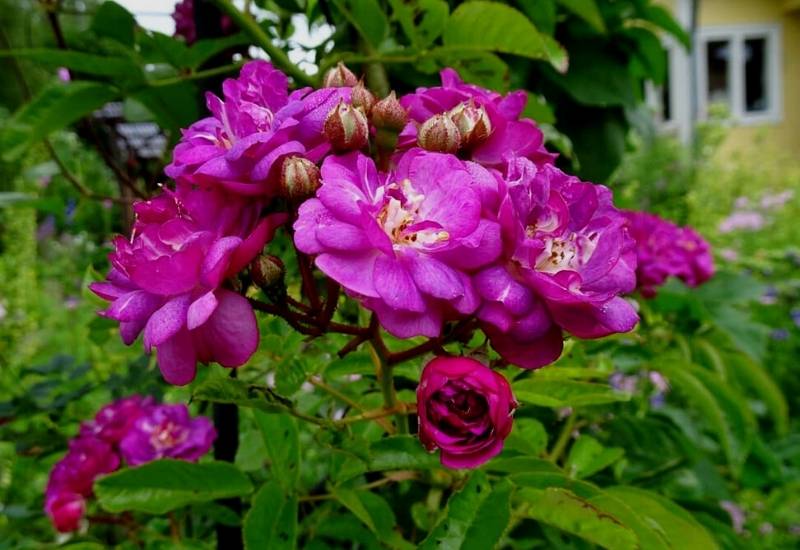
Grow an almost completely thornless piece of “purple history” in your garden with rambling multiflora rose ‘Veilchenblau’! Why? Well, it was bred only one year after ‘Zephirine Drouhin’, in 1869.
Since then, it has adorned gardens with its long smooth branches, forming arches of single, deep magenta purple flowers in late spring and early summer.
The semi double heads have 9 to 12 petals each and they have a medium strong fruity fragrance. Then, when the blooms start fading, they turn almost blue in shade – actually grayish lilac!
Bred by Schmidt it is an ideal rambler for informal gardens; the green foliage and flexible stems adapt well to arching shapes all year round, and once a year, you get a massive show of flowers – like fireworks!
4: Rose ‘Ghislaine de Féligonde’ (Rosa ‘Ghislaine de Féligonde’)
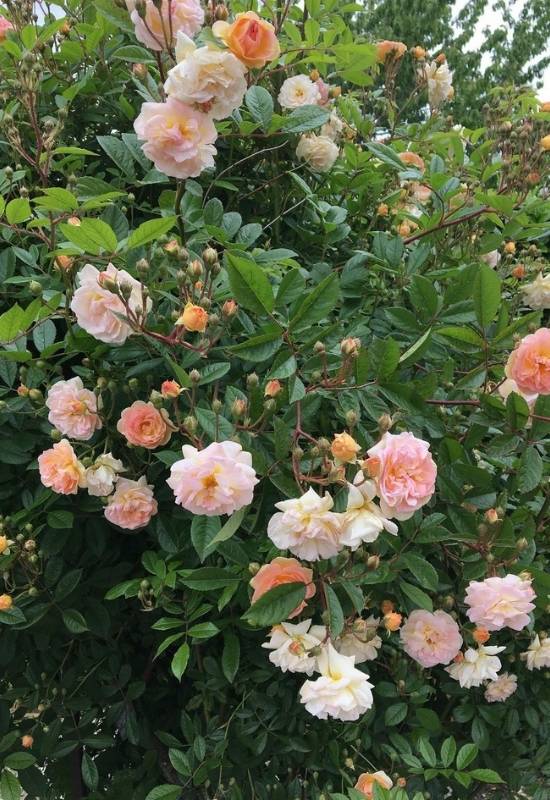
Almost completely thornless and rambling, ‘Ghislaine de Féligonde’ has pale apricot, cupped and fully double blooms from spring to fall. The fragrance is sweet and musky, so natural in quality.
The petal color varies through the season and maturity of the flower itself, taking on peach and even white hues in its palette. It’s a very soft looking variety indeed, excellent for a “dawn effect” in informal gardens.
This is a very ancient heirloom variety, as it was bred back in 1876 by Turbat, but its popularity has no intention of fading!
5: Rose ‘Smooth Lillipop’ (Rosa ‘Smooth Lillipop’)
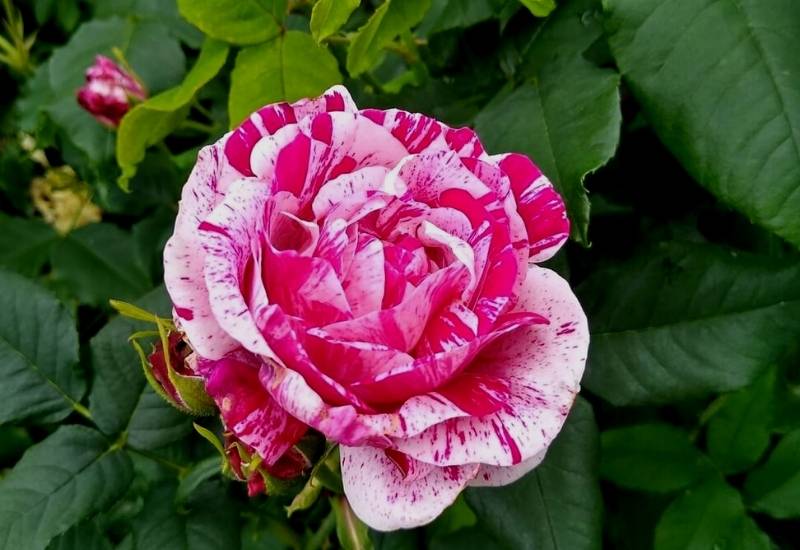
The striking color pattern of thornless ‘Smooth Lillipop’ are quite exceptional. This hybrid tea rose has cup shaped blooms which are Charmaine pink purple and present ivory dashes, as if a painter has dabbed them on!
It is also strange because some come individually, while others in small clusters. It has a much more modern look than the other cultivars we have seen so far and a mild fragrance.
‘Smooth Lillipop’ is a young cultivar; it was introduced by Australian Green and Roses only in 2016. It is the thornless rose you want if you wish for an eye catching and unusual look. It is well adaptable to formal as well as informal settings and designs.
6: Rose ‘Smooth Nonna’s Love’ (Rosa ‘Smooth Nonna’s Love’)
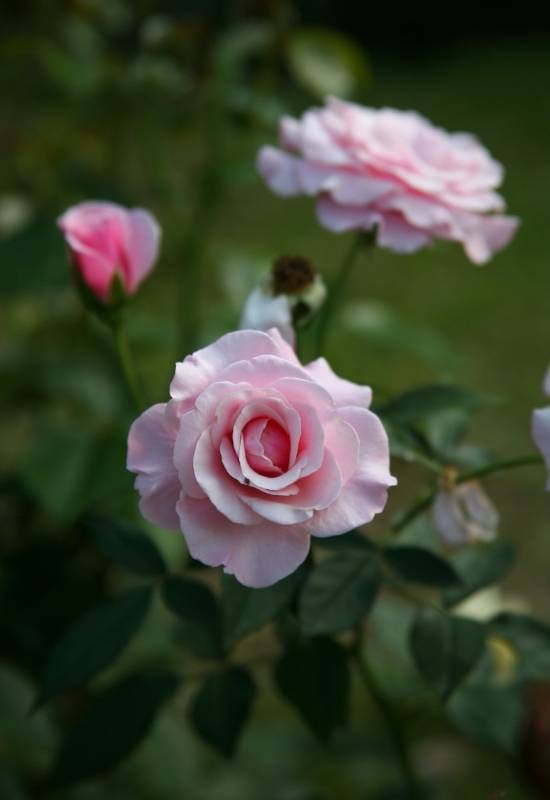
‘Smooth Nonna’s Love’ is a sweet and classical looking thornless variety with double link flowers, where you can see the yellow pistils inside. It’s a natural looking and frilly in appearance.
This is a very traditional looking rose, with dark green foliage which sets off the blossoms very nicely when it is in bloom.
‘Smooth Nonna’s Love’ has a country look and old world effect; it is not a large variety, but it does add a naturalistic touch to gardens and it does it without the “thorny bits”…
7: Rose ‘Lichfield Angel’ (Rose ‘Lichfield Angel’)
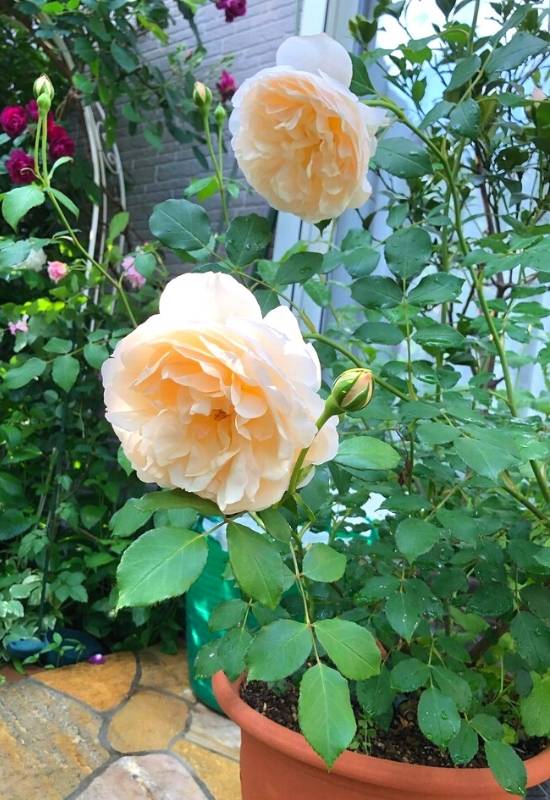
A soft looking English shrub rose ‘Lichfield Angel’ is also soft to the touch, because it is almost thornless. It has classically cupped large blooms that can reach 4 inches in size (10 cm).
These have lots of waxy cream colored petals which open up and then out, turning the whole dome shaped head to a flat rosette. The light musk fragrance adds to the soothing effect of this plant.
This recent cultivar was bred by David Austin in 2006 and it has a special “marble smoothness” on it, and in fact it is named after a famous white stone cathedral in England. It is ideal for a “traditional, neat and bright” garden or terrace.
8: Rose ‘The Shepperdess’ (Rosa ‘The Shepperdess’)
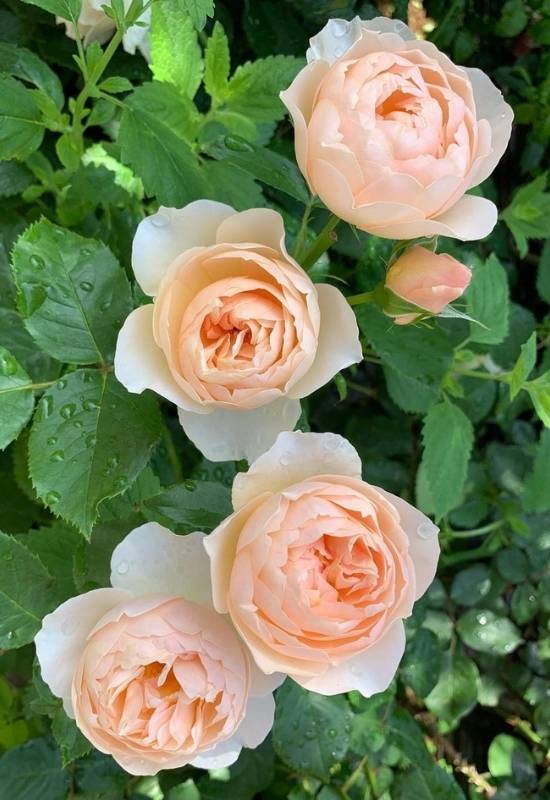
The blushing beauty of English shrub rose ‘The Shepperdess’ is disarming, but it does not protect itself with thorns! It only needs its pale apricot to hinted pink round, cupped and double blooms to win your heart.
These also add a refreshing lemon fragrance to your garden or terrace, and the rich emerald green leaves set them off wonderfully on peaceful shrubs.
This is yet another David Austin smooth cultivar and a recent one; since its introduction in 2005 it has been gaining popularity with many gardeners and making people fall in love with her all over the world.
9: Rose ‘Smooth Buttercup’ (Rosa ‘Smooth Buttercup’)
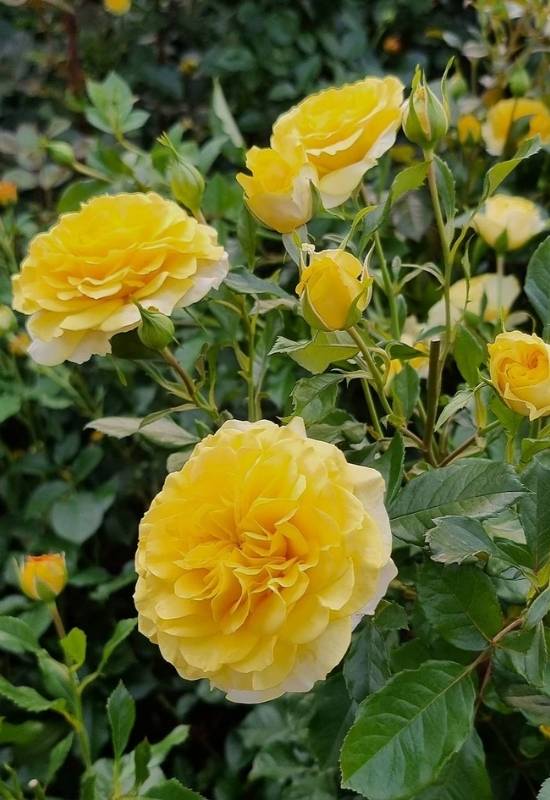
For a short and compact thornless rose variety with a sweet look, floribunda cultivar ‘Smooth Buttercups’ jumps on top of the queue.
Its perfectly cupped flowers with ruffed petals have a soft light yellow shade, and they come in small clusters with repeat blooms from June to fall.
The emerald foliage is matte and perfectly balanced and harmonic with the large blossoms, which can be 4 inches across (10 cm).
This is a bright and mellow looking small shrub with few or no thorns bred by Harvey Davidson in 2003. It is ideal for a light effect in gardens but also for containers.
10: Rose ‘Smooth Velvet’ (Rosa ‘Smooth Velvet’)
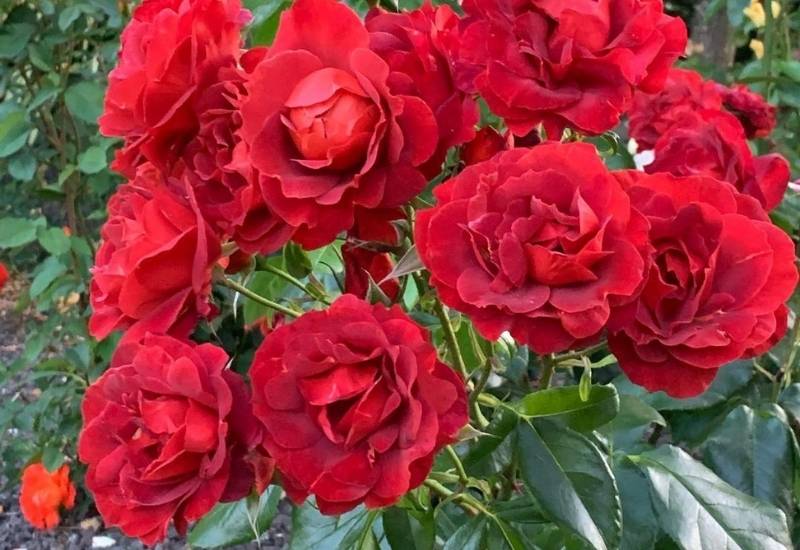
For all the love and passion symbolism of roses but without the painful thorns, climbing ‘Smooth Velvet’ has it all! It has perfect tea cup shaped fully double blooms of the richest ruby to blood red color the petals have a romantic velvety texture.
The emerald green foliage is the perfect complement to the amazing blossoms. These also have a sweet Damask fragrance to add to the amazing effect.
‘Smooth Velvet’ thornless rose was bred by Harvey Davidson in 1986, and it boasts a stunning hybrid tea shape which you can train on trellises, gates, gazebos and even on columns!
11: Rose ‘Kew Gardens’ (Rosa ‘Kew Gardens’)
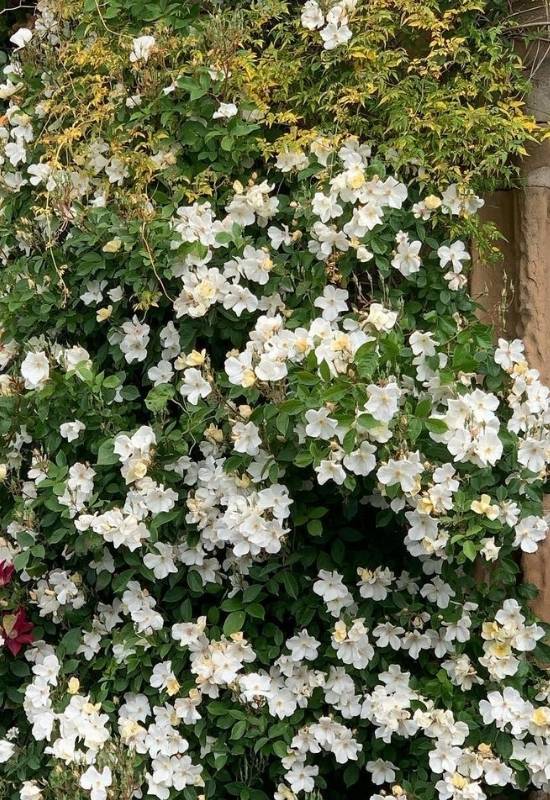
Bring simplicity and tradition with massive blooms but without thorns with English shrub rose ‘Kew Gardens’!
The single white flowers come profusely on huge clusters that turn the whole shrub white… with yellow central pistils and a hint of the light green foliage in the background… But no thorn in sight (almost)!
This recent David Austin variety (2009) is a blooming champion, really! If you like the sea of white it can bring to your garden or even terrace, go for it! This smooth touch beauty is a guarantee!
12: Rose ‘Mortimer Sackler’ (Rosa ‘Mortimer Sackler’)
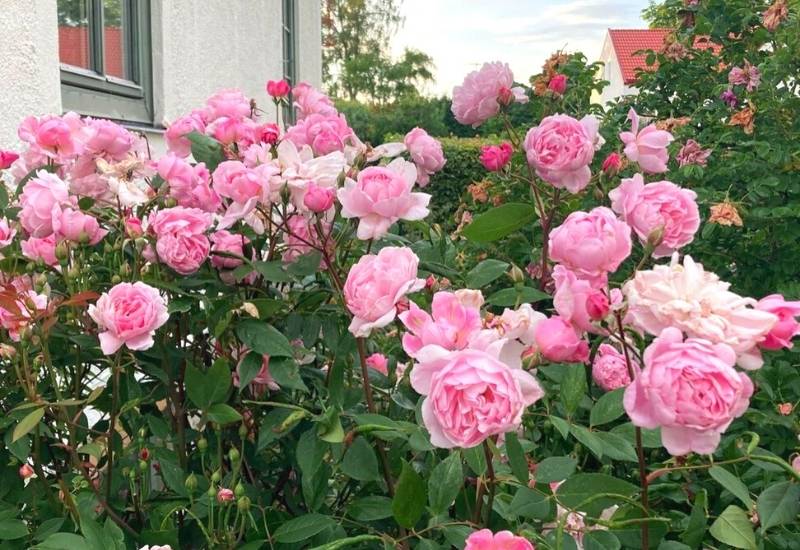
Rebellious looking and soft to the touch, English climbing rose ‘Mortimer Sackler’ is a large thornless variety for a garden with a twist.
The flower heads come from very pointed buds and they open into flat light pink blooms with unusual petals, which are ruffed and pointed.
This makes the loosely double blossoms look wild and unkempt. This climber also has a light but very sought after fragrance: in fact, it is perfect old rose!
A David Austin variety introduced in 2002, ‘Mortimer Sackler’ is ideal for tall walls, gazebos, arches and gates in informal settings, like English country gardens or cottage gardens.
A Rose – And yet No Thorn!
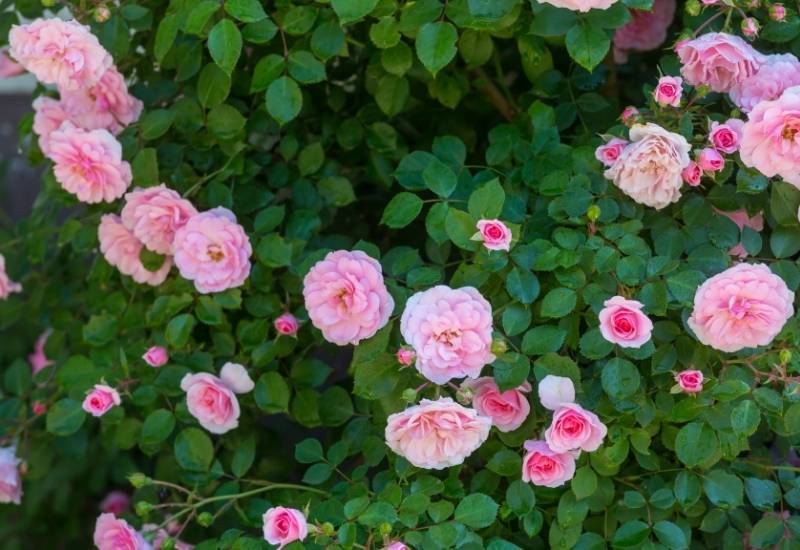
Roses and their thorns are the stuff of myth and collective imagery. But not all roses have spikes… We have seen how thornless and smooth touch roses have come about and also some of the most impressive varieties of many types:
English shrub, climbing, ramblers, floribunda, Bourbon and hybrid tea varieties… Some are small, some big… some old and heirloom, others are very young cultivars… But they all share two things: they are beautiful but – there is no thorn in sight (almost)…

Written By
Adriano Bulla
After many years as an academic in London, Adriano Bulla became a writer, publishing books like A History of Gardening, Organic Gardening and Elements of Garden Design; he then decided to become a gardener, following his childhood dream, and has been following his dream writing and gardening professionally in Southern Europe, where he has specialized in new and innovative organic gardening fields and techniques, like permaculture, regenerative agriculture, food forests and hydroponics.

Hi,I am woman who love roses but alway get hurt when I cleaned around roses tree because roses thorn my garden has a lot roses so I wish garden sent many kinds of roses without thorn to Lowes or Home Depot for customer to buy them. Thank
Where can I purchase some thornless
Rose bushes? Lowes does not have any.
Please advise or call
239-258-6331
You can order online from palatineroses.com